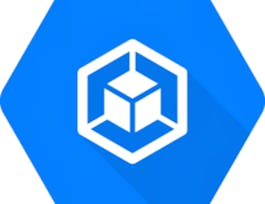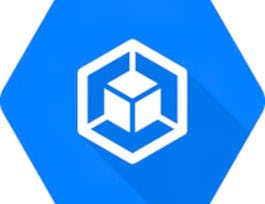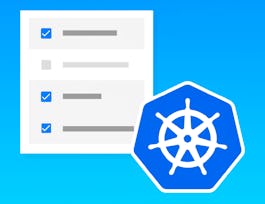Welcome to the Getting Started with Google Kubernetes Engine course. If you're interested in Kubernetes, a software layer that sits between your applications and your hardware infrastructure, then you’re in the right place! Google Kubernetes Engine brings you Kubernetes as a managed service on Google Cloud.



Getting Started with Google Kubernetes Engine
This course is part of multiple programs.

Instructor: Google Cloud Training
Sponsored by InternMart, Inc
118,651 already enrolled
(3,667 reviews)
What you'll learn
Discuss the differences among Google Cloud compute platforms.
Discuss the components and architecture of Kubernetes.
Identify how Google manages Kubernetes orchestration.
Create and manage Google Kubernetes Engine clusters by using the Google Cloud console and gcloud/kubectl commands.
Details to know

Add to your LinkedIn profile
4 assignments
See how employees at top companies are mastering in-demand skills

Build your subject-matter expertise
- Learn new concepts from industry experts
- Gain a foundational understanding of a subject or tool
- Develop job-relevant skills with hands-on projects
- Earn a shareable career certificate


Earn a career certificate
Add this credential to your LinkedIn profile, resume, or CV
Share it on social media and in your performance review

There are 6 modules in this course
The course introduction explains the course goals and previews each section.
What's included
1 video1 reading
The first section of this course introduces cloud computing concepts. Learners explore fundamental terminology, the Google Cloud network, how Google Cloud resources are organized in an hierarchy for management, and the tools available to connect to Google Cloud for allocating, changing, and releasing resources.
What's included
9 videos1 assignment1 app item
The second section of this course examines software containers and the benefit they bring to application deployment. Learners explore containers and container images, Cloud Build, Kubernetes, and Google Kubernetes Engine.
What's included
6 videos1 assignment1 app item
The third section of this course explores the components of a Kubernetes cluster and how they work together. Learners deploy a Kubernetes cluster by using Google Kubernetes Engine, deploy Pods to a GKE cluster, and view and manage different Kubernetes objects.
What's included
6 videos1 assignment1 app item
The final section of this course introduces the kubectl command, which is the command line utility used to interact with and manage the resources inside Kubernetes clusters. Learners are introduced to the concept of introspection, then get practice deploying Google Kubernetes Engine clusters from Cloud Shell.
What's included
4 videos1 assignment1 app item
The course summary recaps the major concepts learners were introduced to during the course.
What's included
1 video
Instructor

Offered by
Why people choose Coursera for their career




Learner reviews
3,667 reviews
- 5 stars
65.48%
- 4 stars
26.03%
- 3 stars
5.58%
- 2 stars
1.25%
- 1 star
1.63%
Showing 3 of 3667
Reviewed on Sep 7, 2019
Excellent course. Lots of hands-on and good amount of videos. I need to redo the Jenkin's lab and Spinnaker's lab again to be able to apply the concepts in real world.
Reviewed on Jun 19, 2018
It's a nice introduction, but doesn't go deep at all, or explore different flags and features. Also, one of the lecturers mostly just reads the slides and doesn't add any value.
Reviewed on Apr 24, 2018
Good course. But at some point I felt that I it more about simply executing the commands which were provided in labs, I think more information on commands and concepts should have been included.
Recommended if you're interested in Information Technology

Open new doors with Coursera Plus
Unlimited access to 10,000+ world-class courses, hands-on projects, and job-ready certificate programs - all included in your subscription
Advance your career with an online degree
Earn a degree from world-class universities - 100% online
Join over 3,400 global companies that choose Coursera for Business
Upskill your employees to excel in the digital economy






